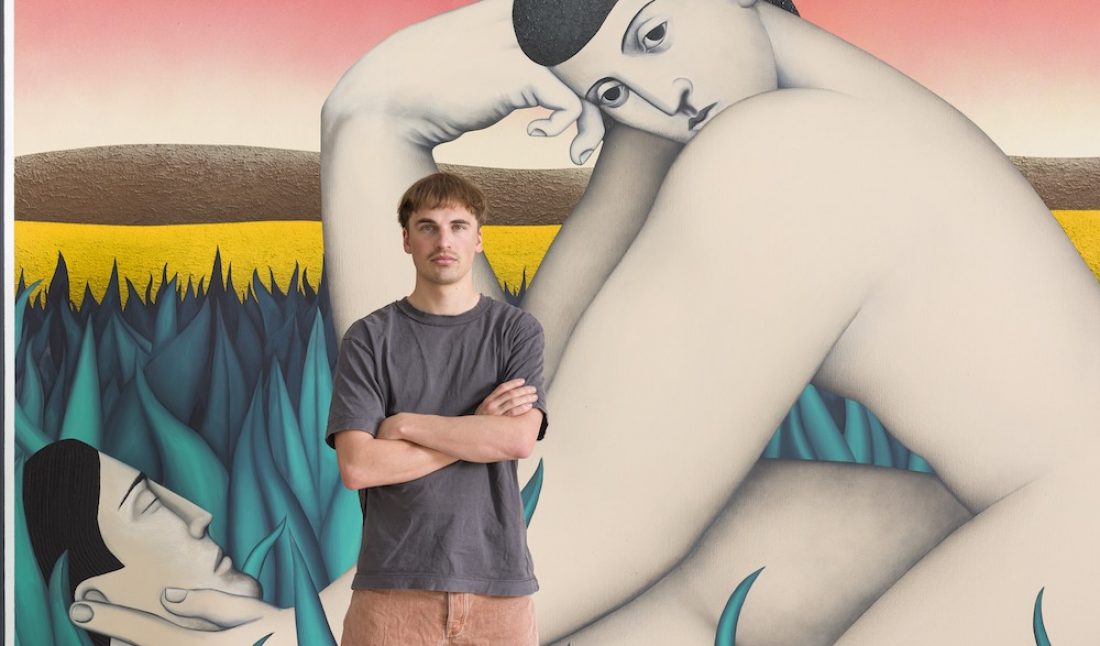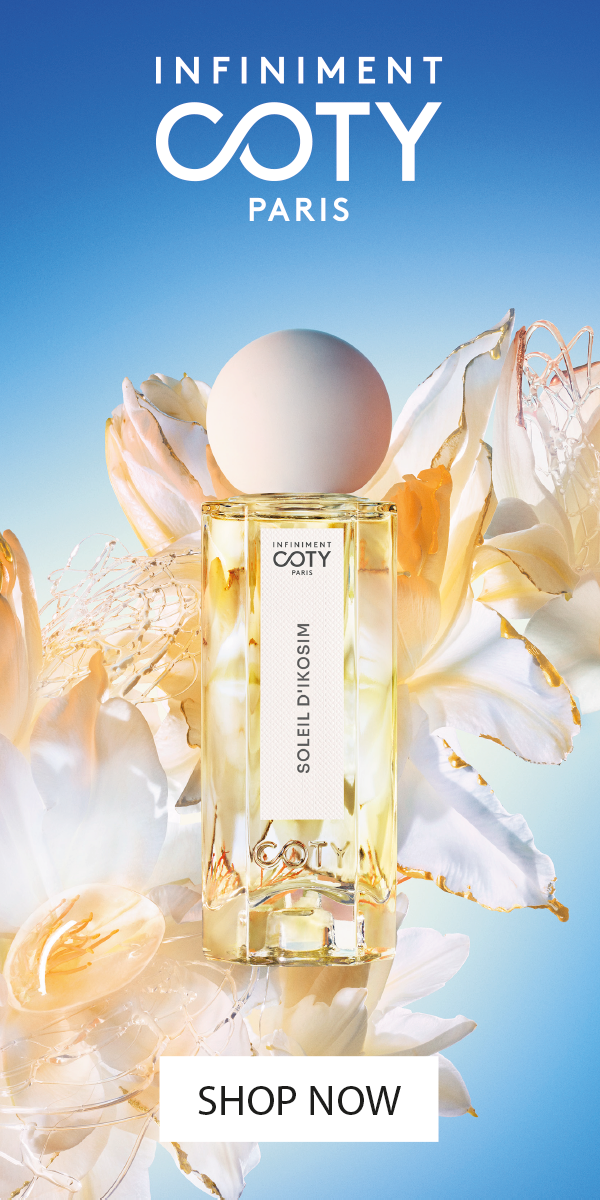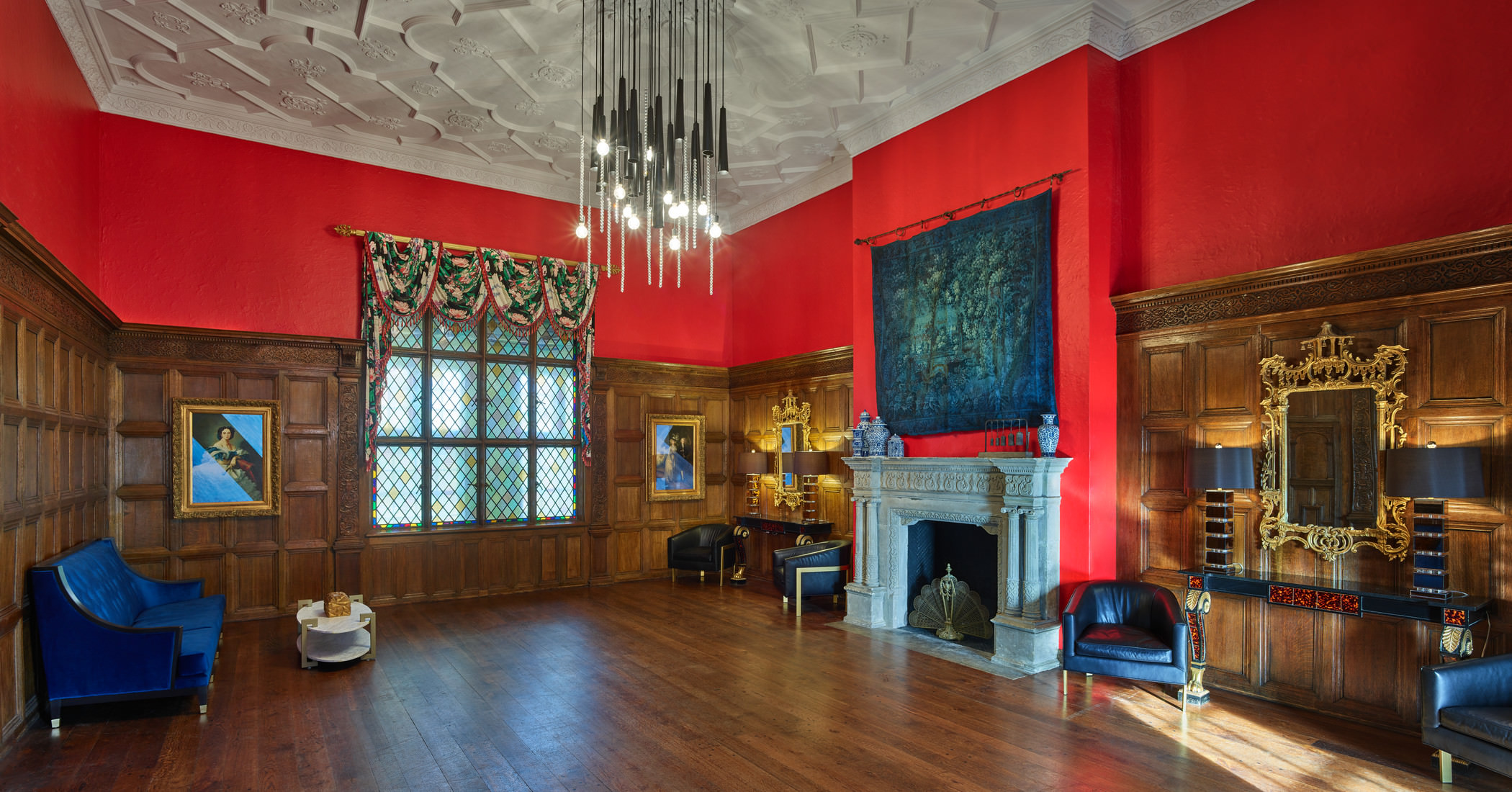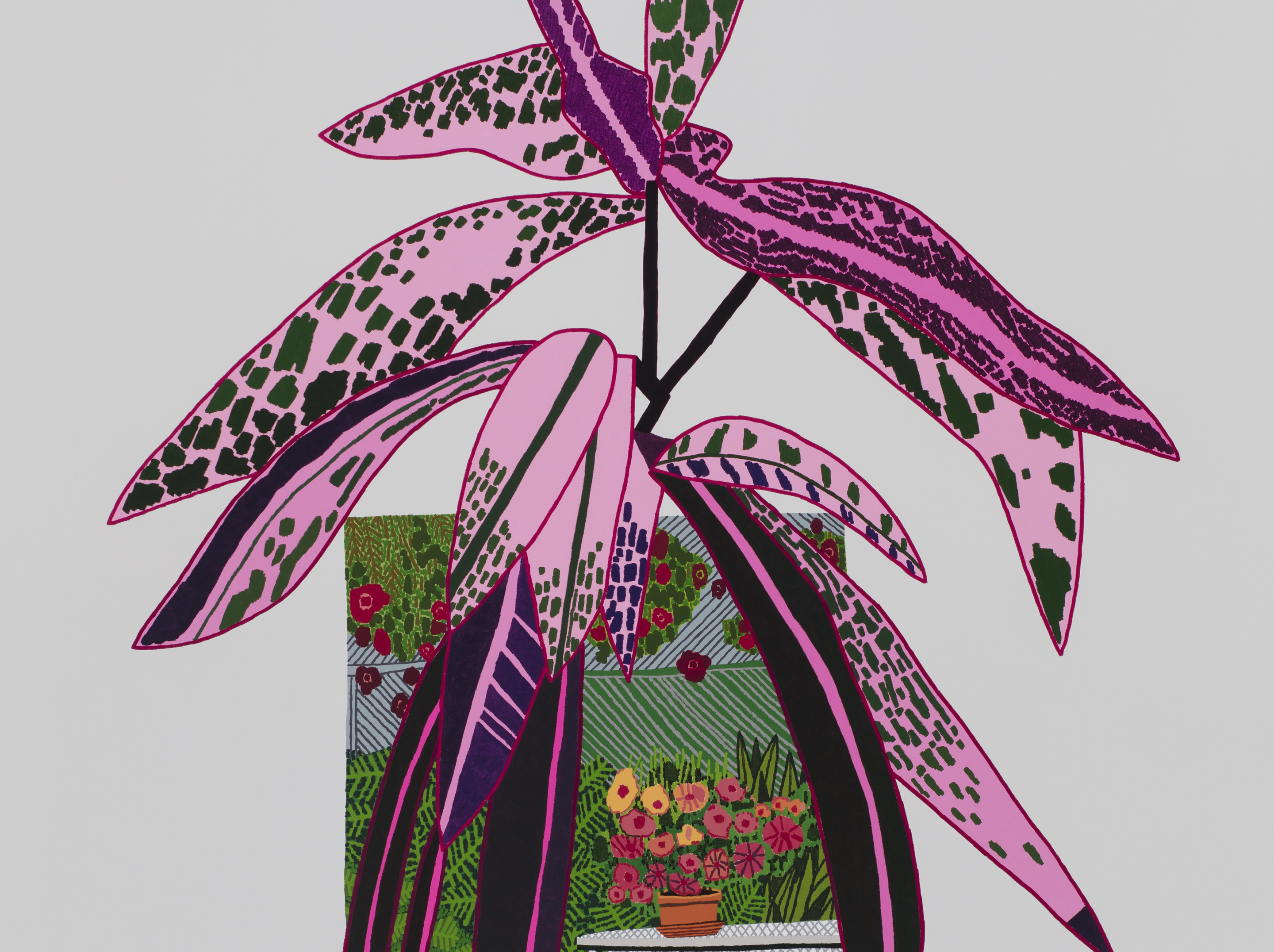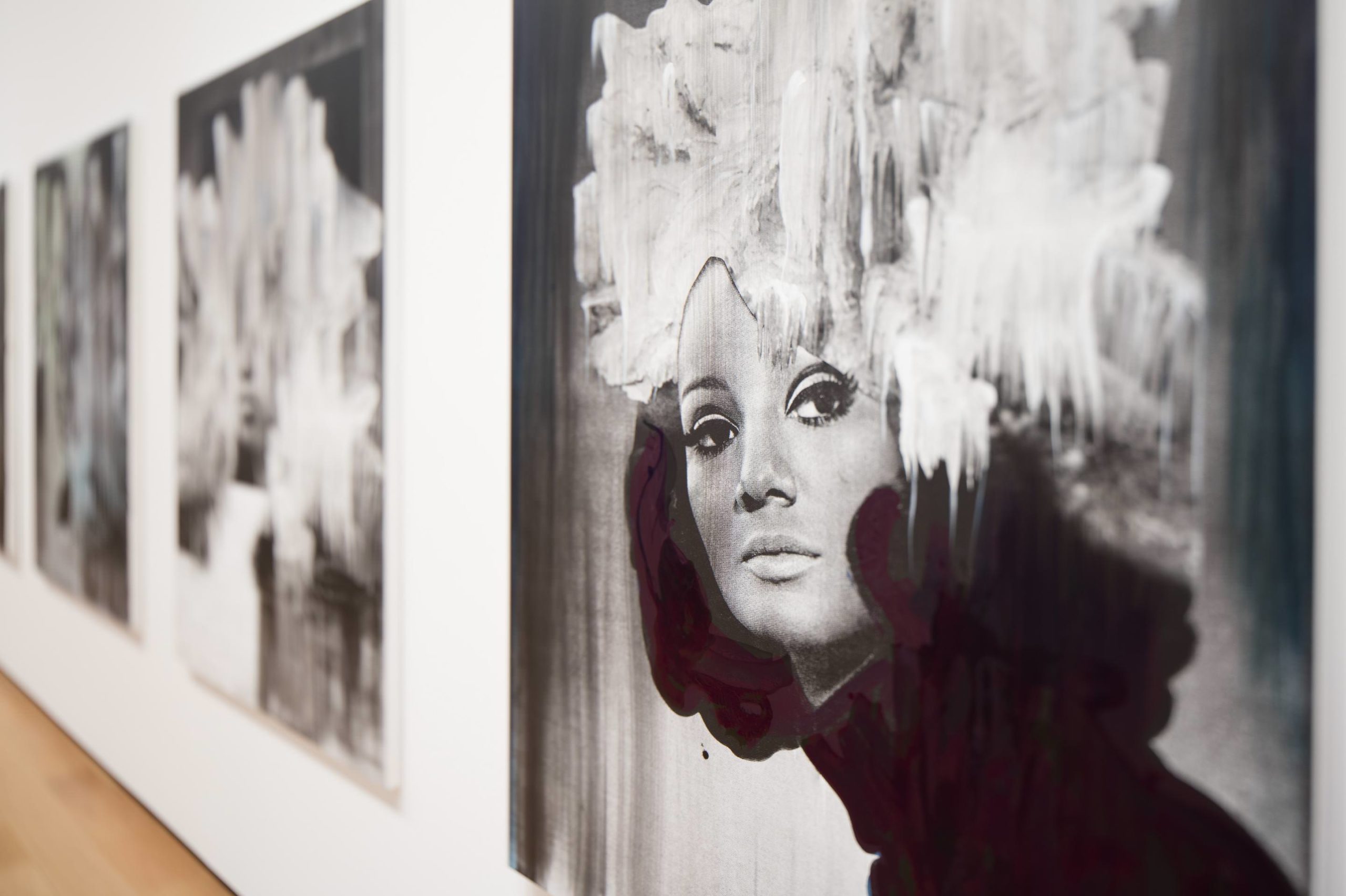Vojtěch Kovařík’s “Under the Weight of the World” is on view at the Power Station in Dallas, Texas, through July 1, 2024. The Czech Republic–based artist is known for his classics-inspired paintings of large figures on bended knee, chiseled faces tilted to the sky, filling the frame of the canvas, set against backdrops of bright, gradient colors. His subjects indeed embody the title of the exhibition. The Power Station as a site, with its high ceilings, concrete floors, and brick walls, provided the perfect setting for Kovařík to go bigger than ever—both up and out.
On view, for instance, is a two-story painting, as well as the artist’s first forays into bas-reliefs hung on the wall. Kovařík started exploring sculpture a couple of years ago, after moving back to the Czech Republic from a year in Italy. As his paintings do, his bas-reliefs reference Greek allegory and mythology, appearing carved in marble or limestone but made with polyurethane resin and sand. He sees them as a bridge between his paintings and 3D sculpture, like the torso of Aphrodite that will be on view at his forthcoming Museum Kampa exhibition in Prague, “From Lines to Matter,” from June 8 through September 8, 2024. As he was preparing for that exhibition, the artist spoke with Whitewall from his studio in Brno. Kovařík was on deadline to ship works, and shared that he’s been pulling near round-the-clock days in the studio, really feeling the heroic weight, size, and agony of the stories and subjects he depicts.
WHITEWALL: Your current exhibition in Dallas received widespread acclaim. Can you share some insight into the creative process behind the works in “Under the Weight of the World” at the Power Station?
VOJTĚCH KOVAŘÍK: It was the first time I showed my bas-reliefs on the wall. I had never worked with this kind of sculptures before. I also painted for the exhibition my largest one-panel painting to date, which was deliberately created for a concrete space. Each of the figures communicated with individual floors.
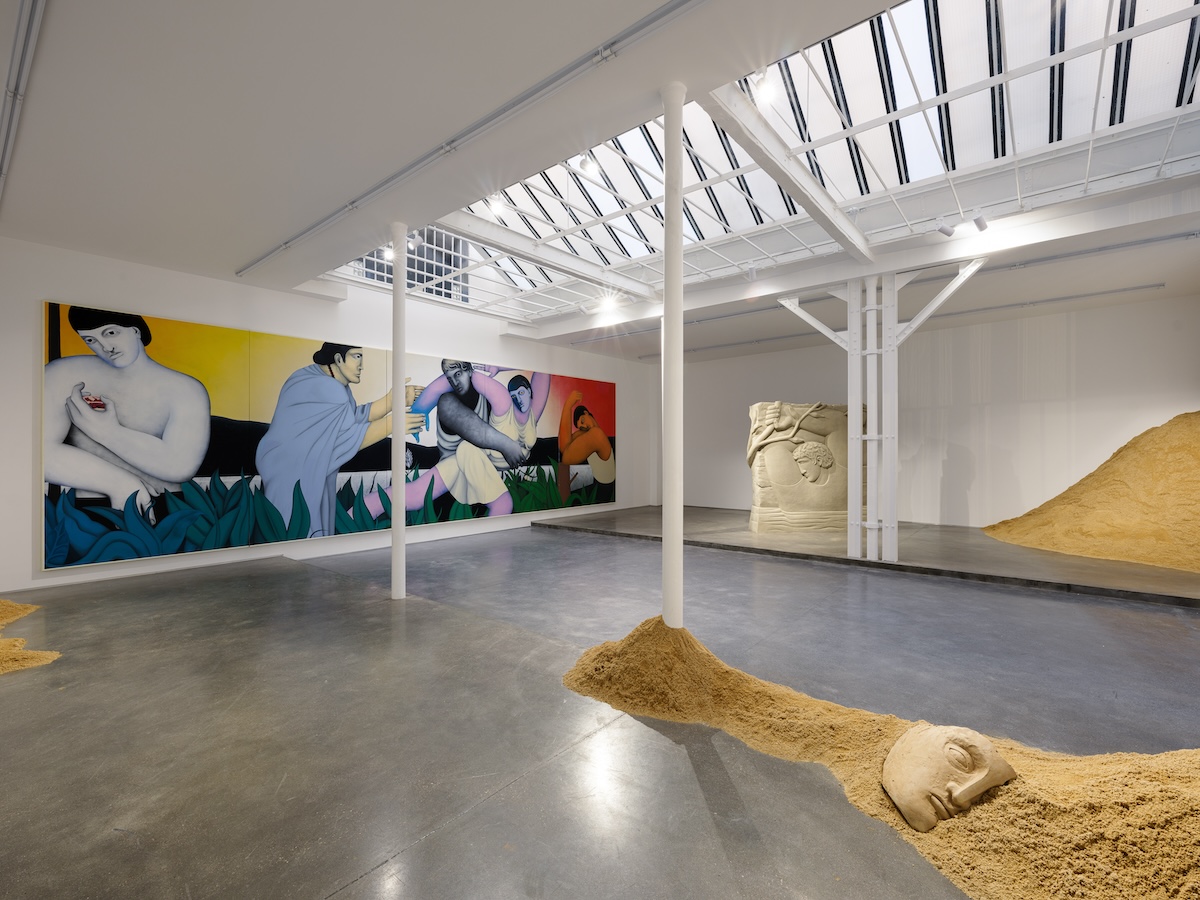 Installation view of “Lost in Time” by Vojtěch Kovařík at Galerie Derouillon, Paris, 2023, photo by © Grégory Copitet, courtesy of the artist and Galerie Derouillon, Paris.
Installation view of “Lost in Time” by Vojtěch Kovařík at Galerie Derouillon, Paris, 2023, photo by © Grégory Copitet, courtesy of the artist and Galerie Derouillon, Paris.
Vojtěch Kovařík Increases the Scale and Weight of his Work
WW: So was there something specific to Texas or just the site of the exhibition that inspired you?
VK: I was in Dallas in November of last year. I spent a few days in the city and visited some interesting spaces and museums. I felt there was something interesting about the murals, and the Mexican influence that is still in Texas. For me, Texas is about large things—everything was so big. I felt I had an opportunity to fulfill my dreams. I’m still trying to increase the format of the works, whether it’s paintings or sculptures, so to create something monumental seemed very suitable for this exhibition.
WW: Everything is bigger in Texas, right? Your exhibition this summer at Museum Kampa in Prague is your next show. How has the cultural landscape of the city influenced your vision for this exhibition? Prague being in your home country, was there a cultural element you wanted to reflect on?
VK: For the Kampa show there will be more different mediums, a lot of new things, a lot of new materials, a lot of new views. I don’t work in cycles, I work continuously, and I’m used to the fragmentation that allows me to discover new perspectives.
I’ve been working for the exhibition for the Kampa Museum for over half a year, I’ve made a model of the space, and I’ve thought up the individual works for a specific space.
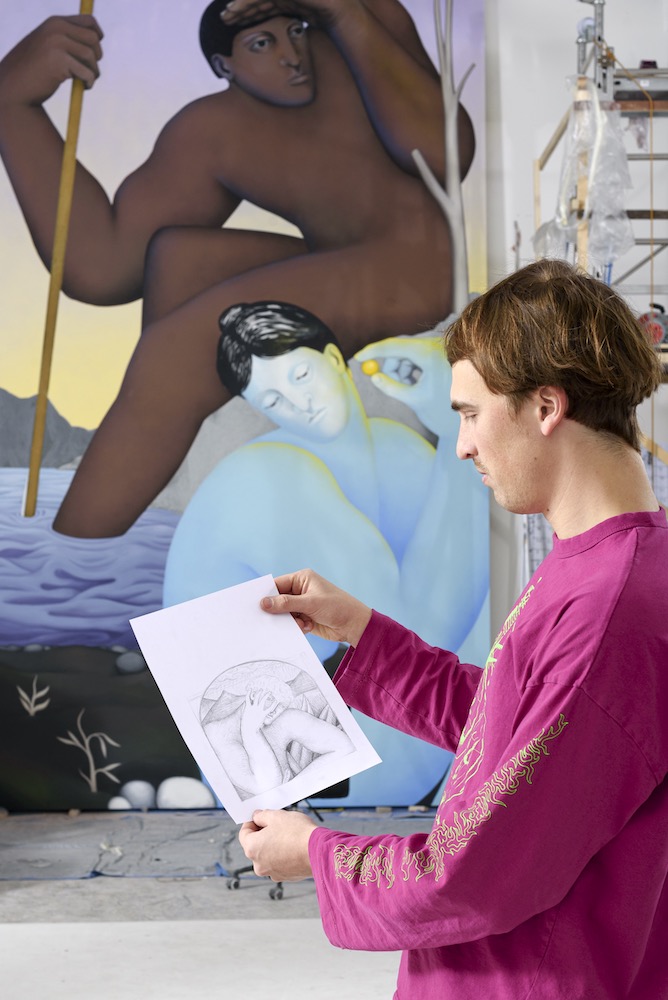 Vojtěch Kovařík in his studio, photo by Matěj Doležel.
Vojtěch Kovařík in his studio, photo by Matěj Doležel.
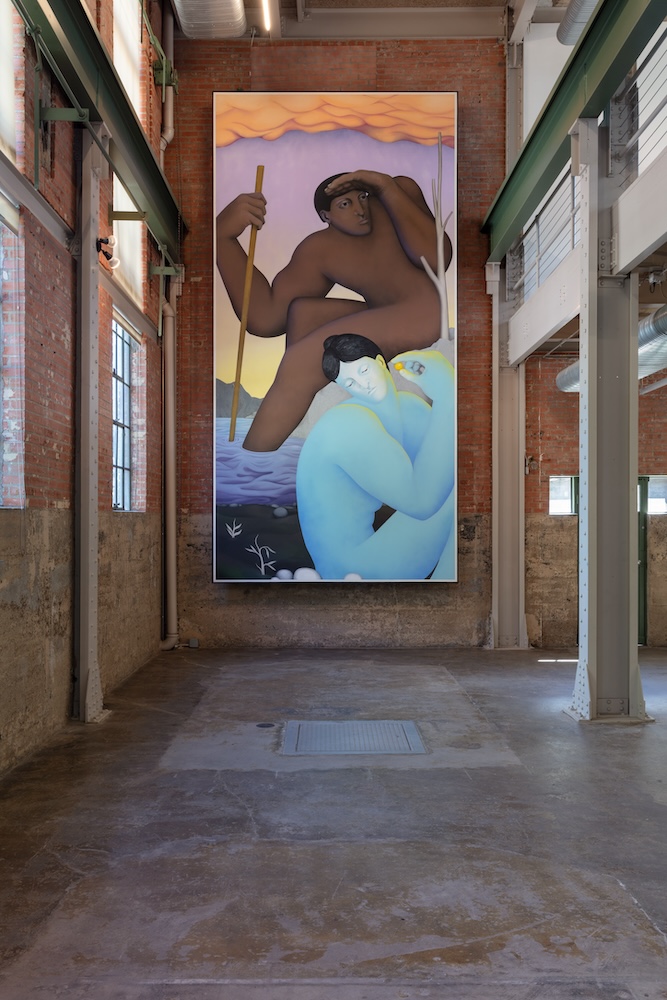 Installation view of “Under the Weight of the World” by Vojtěch Kovařík, photo by Kevin Tudor, courtesy of The Power Station.
Installation view of “Under the Weight of the World” by Vojtěch Kovařík, photo by Kevin Tudor, courtesy of The Power Station.
WW: So, in a way, you are still experimenting, and the reflection is in process with your hands.
VK: Yes. I knew that I had the possibility to do whatever I wanted. It’s not a commercial show, so that was for me the best information I had for preparing the show.
WW: You must have a special feeling, though, to be showing in your home country?
VK: For me to have my first museum exhibition at home is a dream. It is a great honor and I appreciate it very much.
And also in some way, it’s a strange feeling because the last time I exhibited my work here was five years ago, but then I made a big leap to exhibiting abroad, and since then I feel a bit disconnected. So I’m curious about others’ reactions.
“For me to have my first museum exhibition at home is a dream,”
— Vojtěch Kovařík
WW: Your artistic style is known for its unique blend of traditional and contemporary elements. How do you balance these influences?
VK: I try to achieve a harmony that arises during the process as my reaction to the relentlessness of time. I like to go back to the roots of civilization to Greece, to Egypt, and so on. I like to go back to the past in order to better understand the future.
At Kampa, there will be about 14 works. It made everything a big challenge for me, bigger than ever before. Now I feel much more the time becoming part of the narrative. As if the work is my own allegory of life. The captured figures in my work are always suffering, struggling with something. And now I feel the same [laughs].
WW: It’s your work that influences your mood and not the opposite.
VK: Yes. It is a mirror of my life. In the studio, I sometimes feel like it’s draining me, I’m consumed by anger when things don’t go well. But even if I do well and extract that painting from myself, there is still a huge gap on the other side that needs to be filled somehow. Then I need to start something else or go from painting to sculpture.
The works are rooted in Greek mythology. In trying to find a way to describe myself or something from everyday life, I find Greek mythology describes things much, and it is still relevant, and we learn from it. For example, I have a big sculpture of Aphrodite that will be installed on the terrace of Kampa, looking directly into the Vltava River.
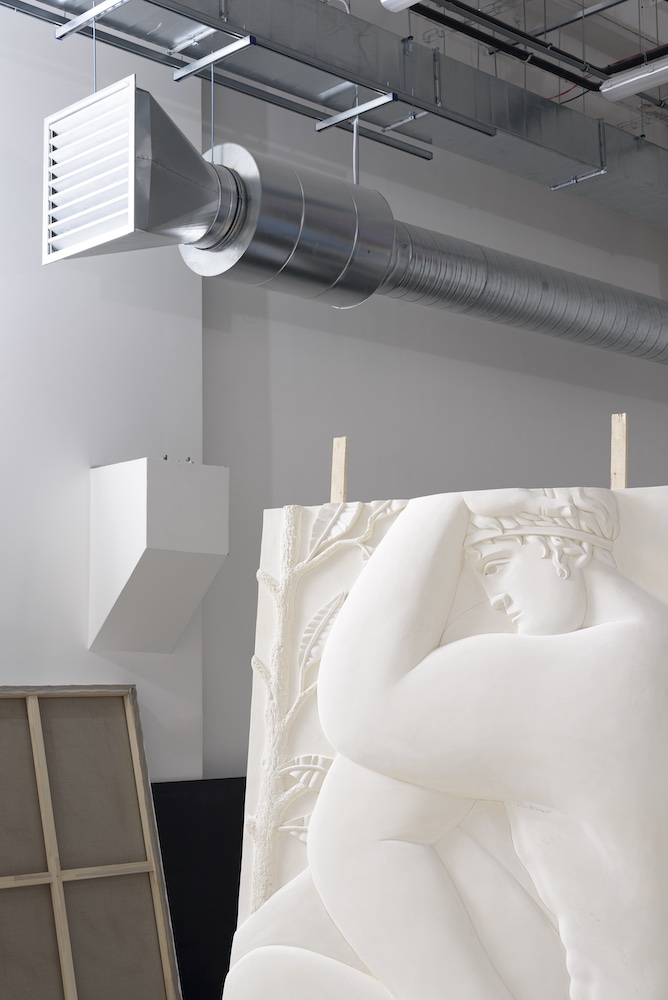 Vojtěch Kovařík’s studio, photo by Matěj Doležel.
Vojtěch Kovařík’s studio, photo by Matěj Doležel.
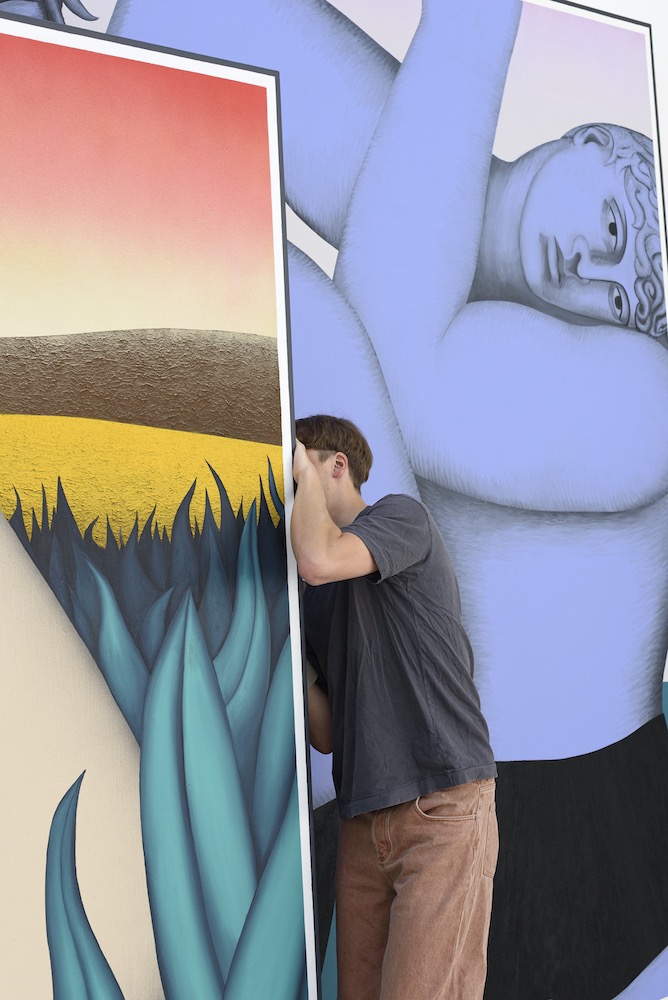 Vojtěch Kovařík in his studio, photo by Matěj Doležel.
Vojtěch Kovařík in his studio, photo by Matěj Doležel.
It will be romantic and partly classically stylized, but what I realized during this process is that I can completely change the expression and emotions of the works with a simple touch. The paintings go deeper, too. For me for years, it was more about how to paint. And now it’s I’m in more control of the painting and I can do more with emotions, more with the eyes, more with the connection. I can play more.
The biggest focus is the gesture and the look. The eyes and the face make the whole painting. The gesture is much more individual than even individuality. It’s like if you can use the right shape of the hand or view of eyes, then there’s already so much going on that you can keep everything else abstract.
Vojtěch Kovařík Prepares to Show New Work at Kampa Museum
During my studies I built a bunker in the studio of the school, where I painted all the time hidden, undisturbed.
I almost never consulted with professors, and I was never very involved in art communities. I like to work in privacy and to have a clean mind. I believe it makes much more sense to have clean visions, to find my own way and thinking about life, about my work.
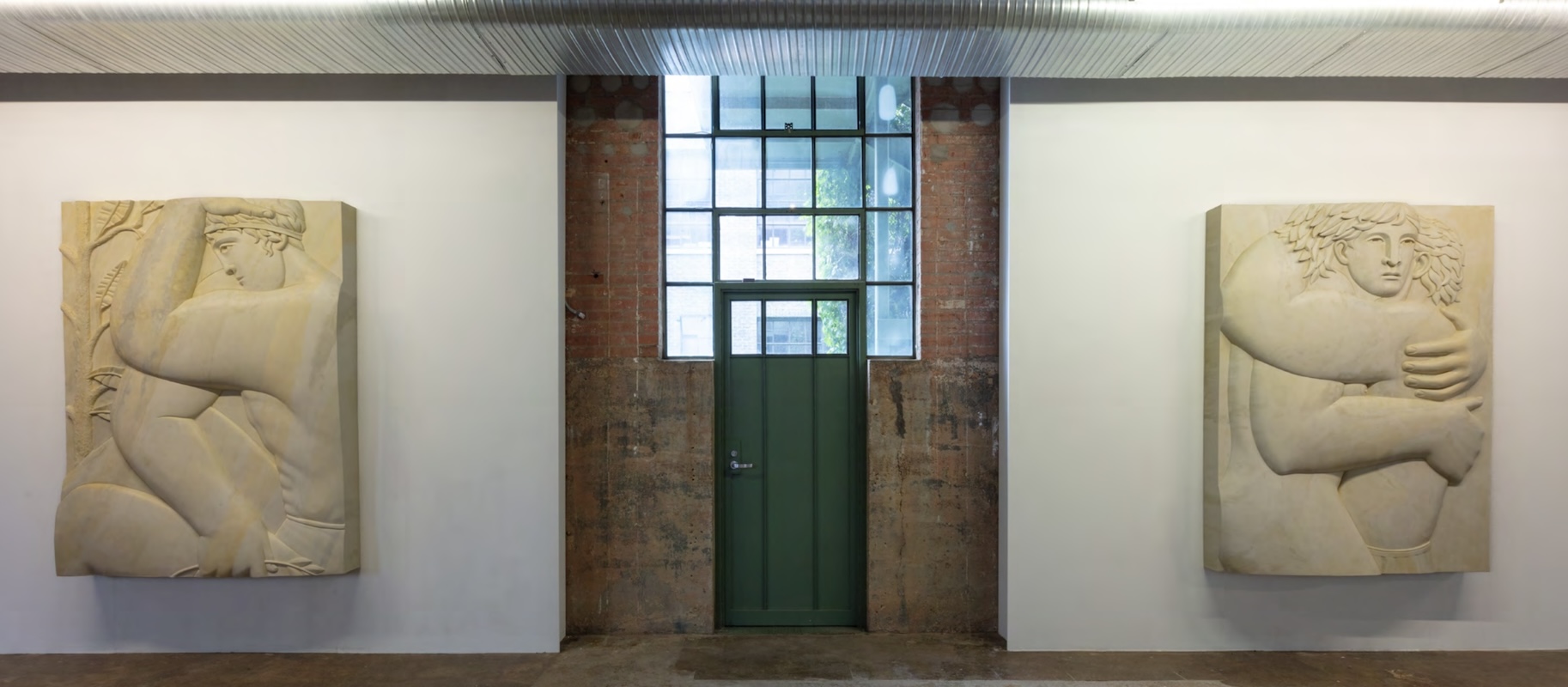 Installation view of “Under the Weight of the World” by Vojtěch Kovařík, photo by Kevin Tudor, courtesy of The Power Station.
Installation view of “Under the Weight of the World” by Vojtěch Kovařík, photo by Kevin Tudor, courtesy of The Power Station.
“I like to go back to the past in order to better understand the future,”
— Vojtěch Kovařík
WW: Can you tell me about how you are thinking about color in your paintings, as well?
VK: In each work I use colors in a different way. I am still trying to find harmony with each painting. I constantly question all my works, so I try to find something new with each painting. I feel like a painter in the sense that I’m constantly painting, even when I’m not painting. To find the color I sometimes use books, sometimes colors from plants, often, for example, from tulips. I try to go natural and work with the conscious and unconscious, and sometimes I like to create my own color relationships. I don’t have one favorite color, but the important thing is what color is next to it.
WW: How did you start working in sculpture?
VK: Working with matter has always fascinated me, especially direct contact with the material. I studied ceramics in secondary school in Uherské Hradiště. So I had some foundation in sculpture, but I never had the patience to do larger projects. However, recently I started working with my brother and a few more people, who are helping me to realize my big sculptures. There’s still a big question about sculpture for me because I’m not sure about the 3D sculpture. It’s so tricky. The bas-reliefs are still more like the paintings. I’m more controlled with them about what I’m doing because they have fewer views. It’s something that bridges between the sculpture and the painting.
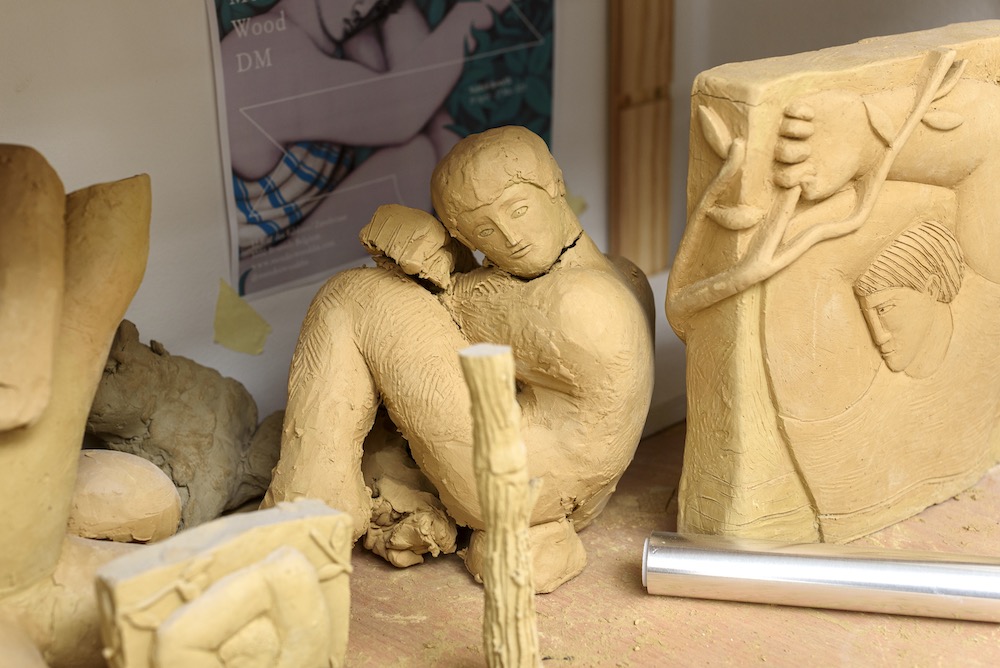 Vojtěch Kovařík’s studio, photo by Matěj Doležel.
Vojtěch Kovařík’s studio, photo by Matěj Doležel.
WW: Will there be 3D sculpture at Kampa?
VK: There will be one 3D sculpture, the torso of Aphrodite, and two more reliefs. One will be in bronze, with a very deep relief. And the second will be from resin and it will be gold plated with an iron frame.
WW: Can you tell us about your studio?
VK: The past few months it’s been more and more intense. When I’m trying to challenge myself, I get more and more obsessed with that, so it turns me into a person who is sleeping with my work and not leaving the studio, forgetting to eat, and so on. But normally, my practice is about 12 hours in the studio. The last few weeks, though, I’ve been here every day for 16 hours or something like that per day. So not much living! [Laughs] Not much time for the other things.
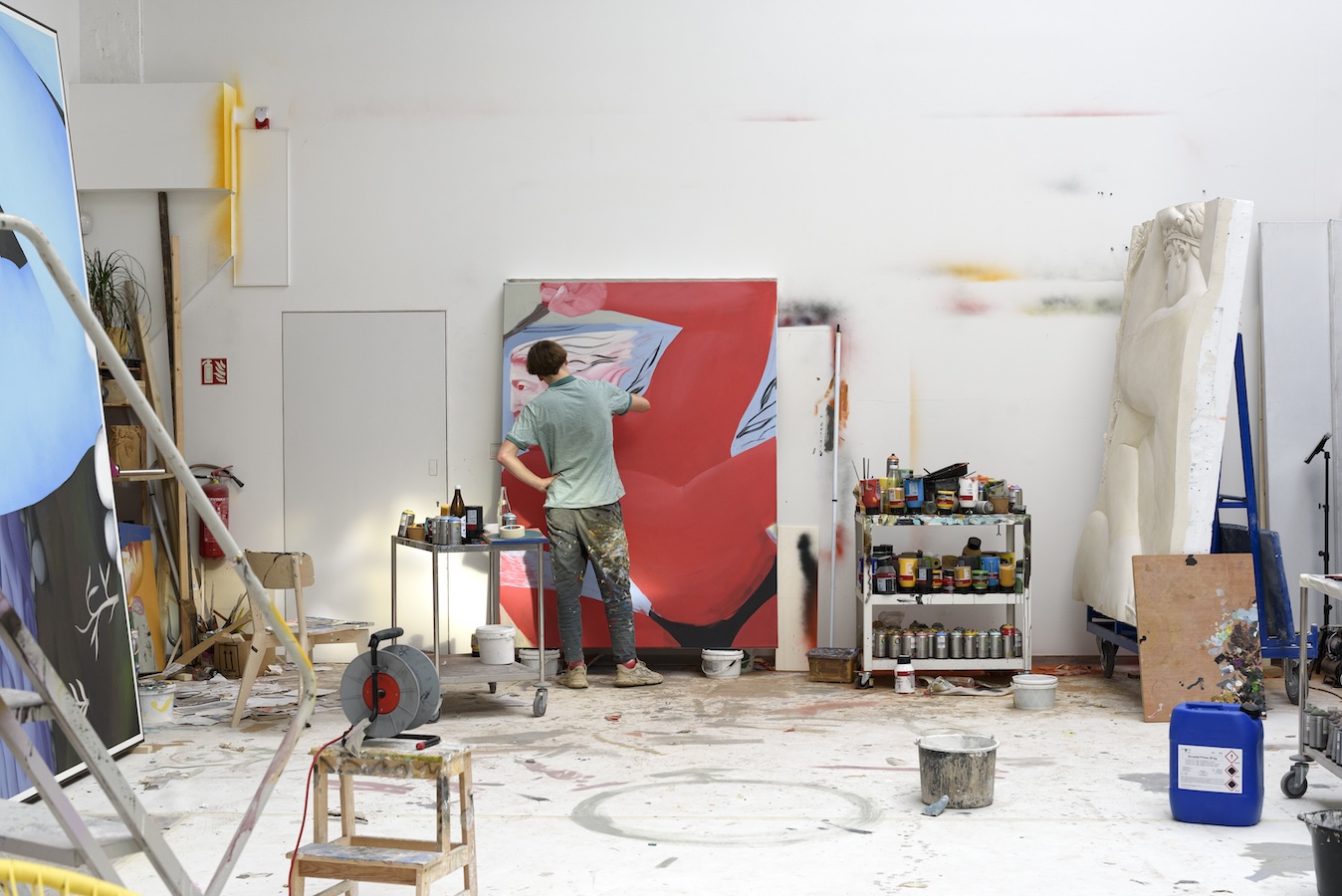 Vojtěch Kovařík in his studio, photo by Matěj Doležel.
Vojtěch Kovařík in his studio, photo by Matěj Doležel.
“I am still trying to find harmony with each painting,”
— Vojtěch Kovařík
WW: Do you do sculpture in the same studio?
VK: No, I have two studios. One is in Brno, where I am now living and where I only focus on paintings. It’s a dream studio, very bright and enough big. The second one is in Rožnov pod Radhoštěm, where I grew up. Six years ago, we built a small studio in the middle of greenery. I painted there for a couple of years, and now I keep that studio for sculptures. So usually, on the weekends I take my family to Rožnov p.R., and I continue working on different projects, on the sculptures.
WW: So you have your week studio and the weekend studio.
VK: Growing up, my parents were always like this, where everything connected with work, I think. So I’m used to doing the same. I also know how to play with the kids and to connect everyone in the work, too. But I try to set aside at least every Sunday purely for the family.
WW: Are your parents artists?
VK: My father is a garden architect, and my mother works with him. We spent almost every weekend visiting the museums, theaters, et cetera. The closest big city of art is Vienna, so we spent a lot of time in Vienna. Then on summer vacations we used to go to Greece, so I know a lot of Greece. Also, I have two older brothers, both artists—one is a painter, the second is a sculptor. And I was lucky that I had the support, so my parents let me do what I wanted to. Actually, you can say that they kind of pushed us into art, and my father couldn’t in his time, because before that it was very socialist here. I was born in 1993, when the Czech Republic became a separate state. I’m a new republic kid.
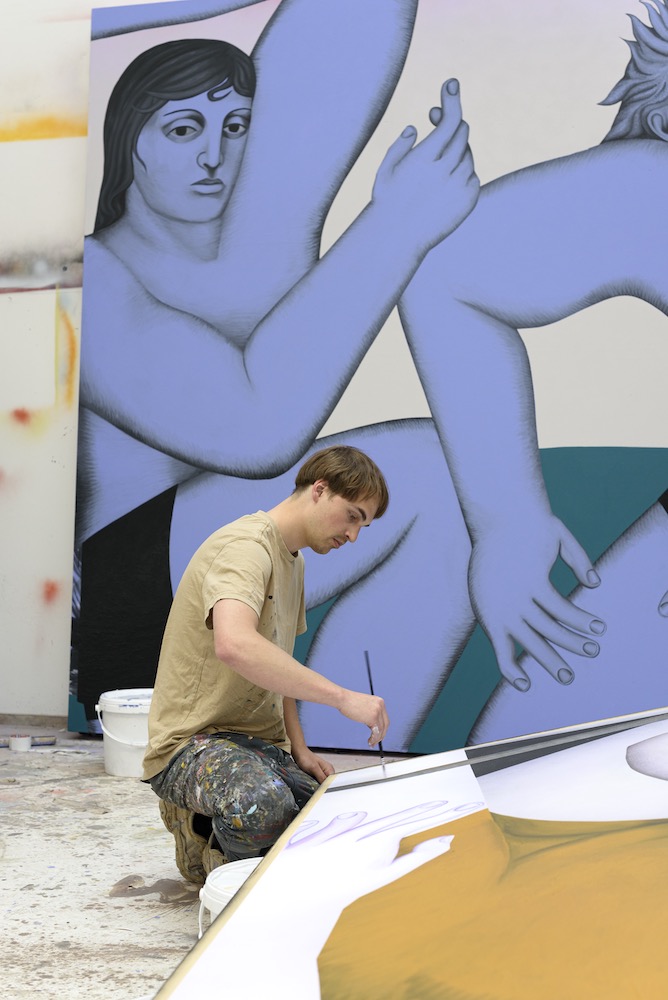 Vojtěch Kovařík in his studio, photo by Matěj Doležel.
Vojtěch Kovařík in his studio, photo by Matěj Doležel.
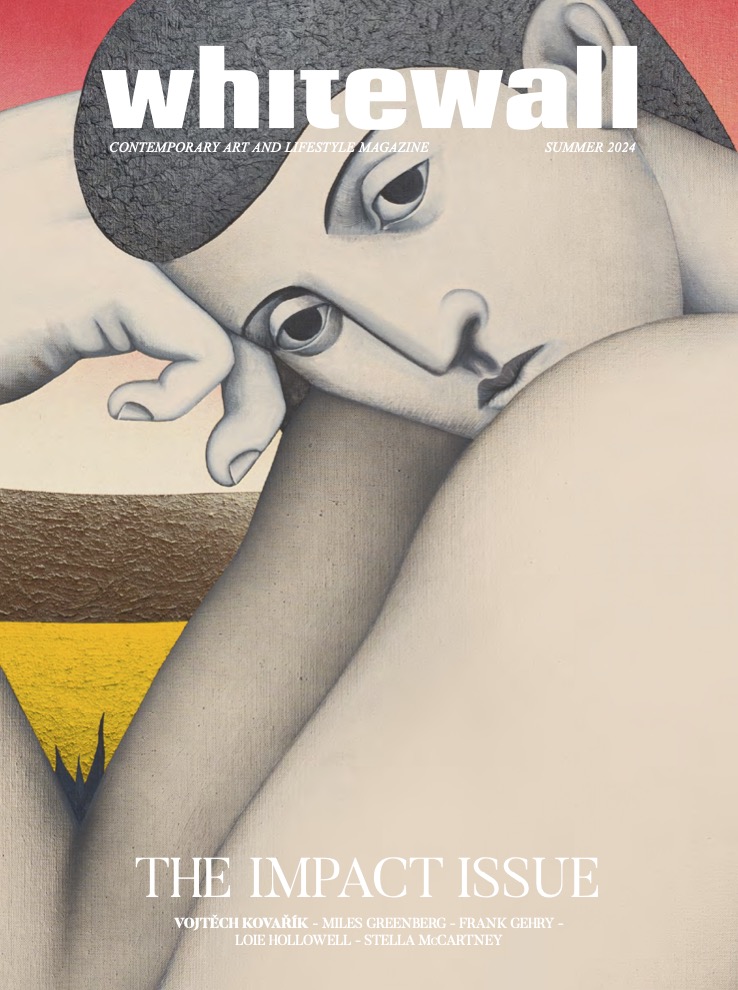 Vojtěch Kovařík Summer 2024 impact issue cover; Vojtěch Kovařík, Selene and Endymion (detail), 2024, 350 x 220cm, acrylic and sand on canvas, photo by Matěj Doležel, courtesy of the artist & Galerie Derouillon, Paris.
Vojtěch Kovařík Summer 2024 impact issue cover; Vojtěch Kovařík, Selene and Endymion (detail), 2024, 350 x 220cm, acrylic and sand on canvas, photo by Matěj Doležel, courtesy of the artist & Galerie Derouillon, Paris.
WW: How do you think that impacted your work today?
VK: Mostly visually. I like the relics of these times. I think that the Czech Republic is quite full of it, whether it is sorels, or perhaps facade reliefs, in a certain point of view it is a great inspiration for me.
WW: Aside from going larger and larger, looking ahead, are there any new directions or mediums you are eager to explore?
VK: I would like to try the traditional fresco technique or some large mural sometime.







